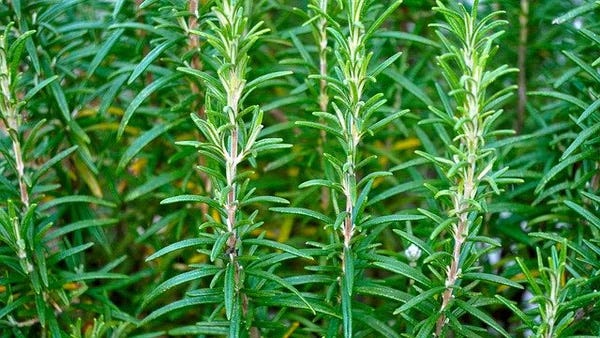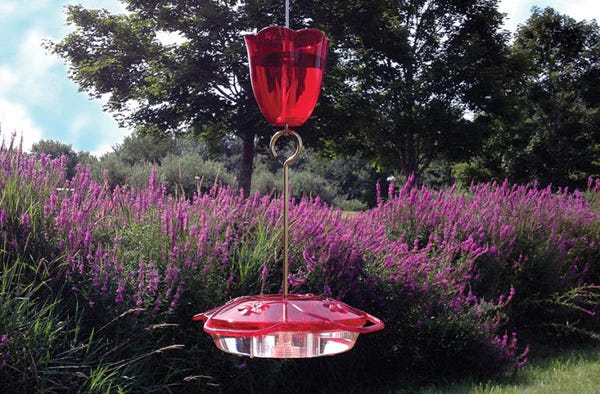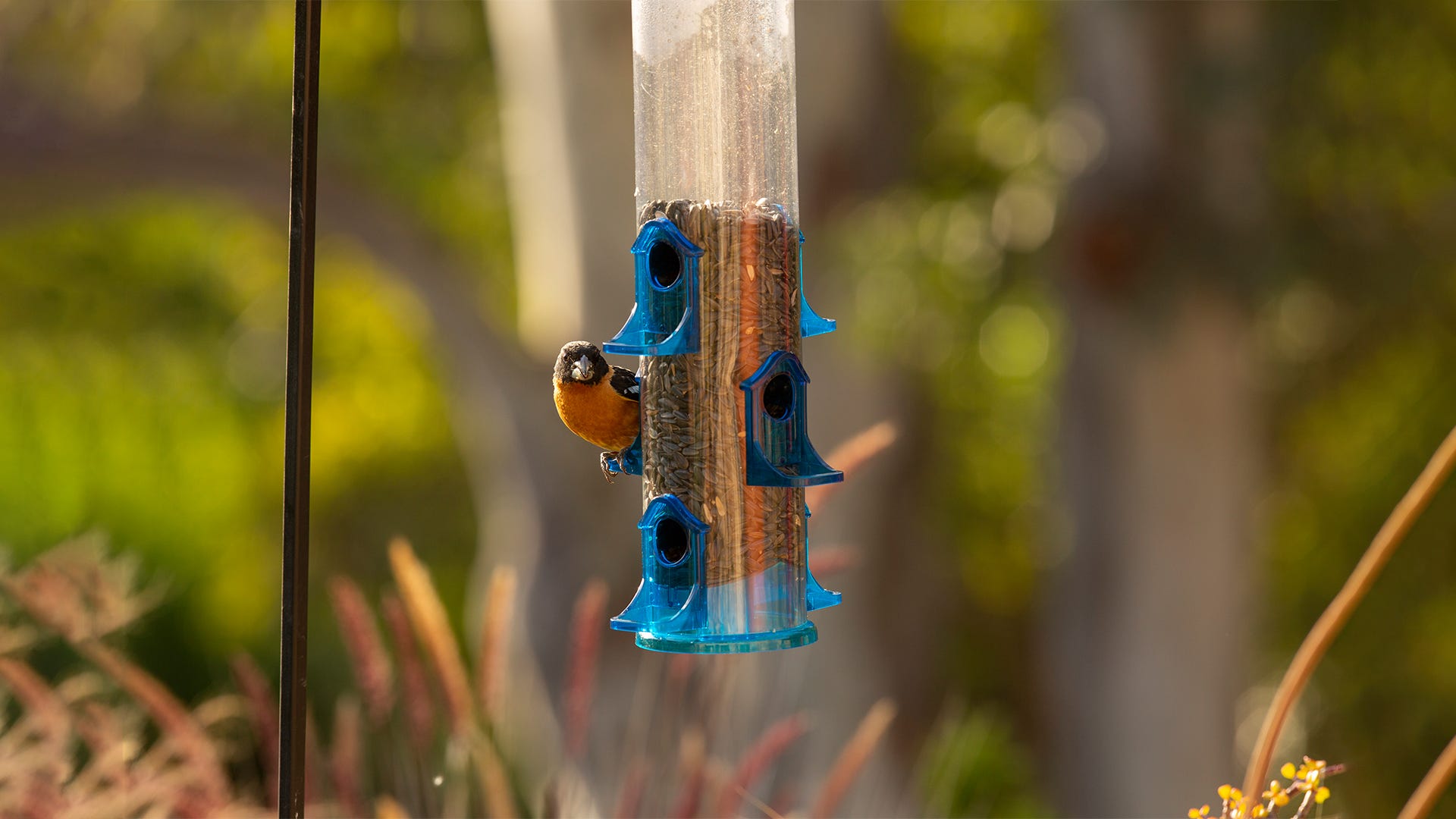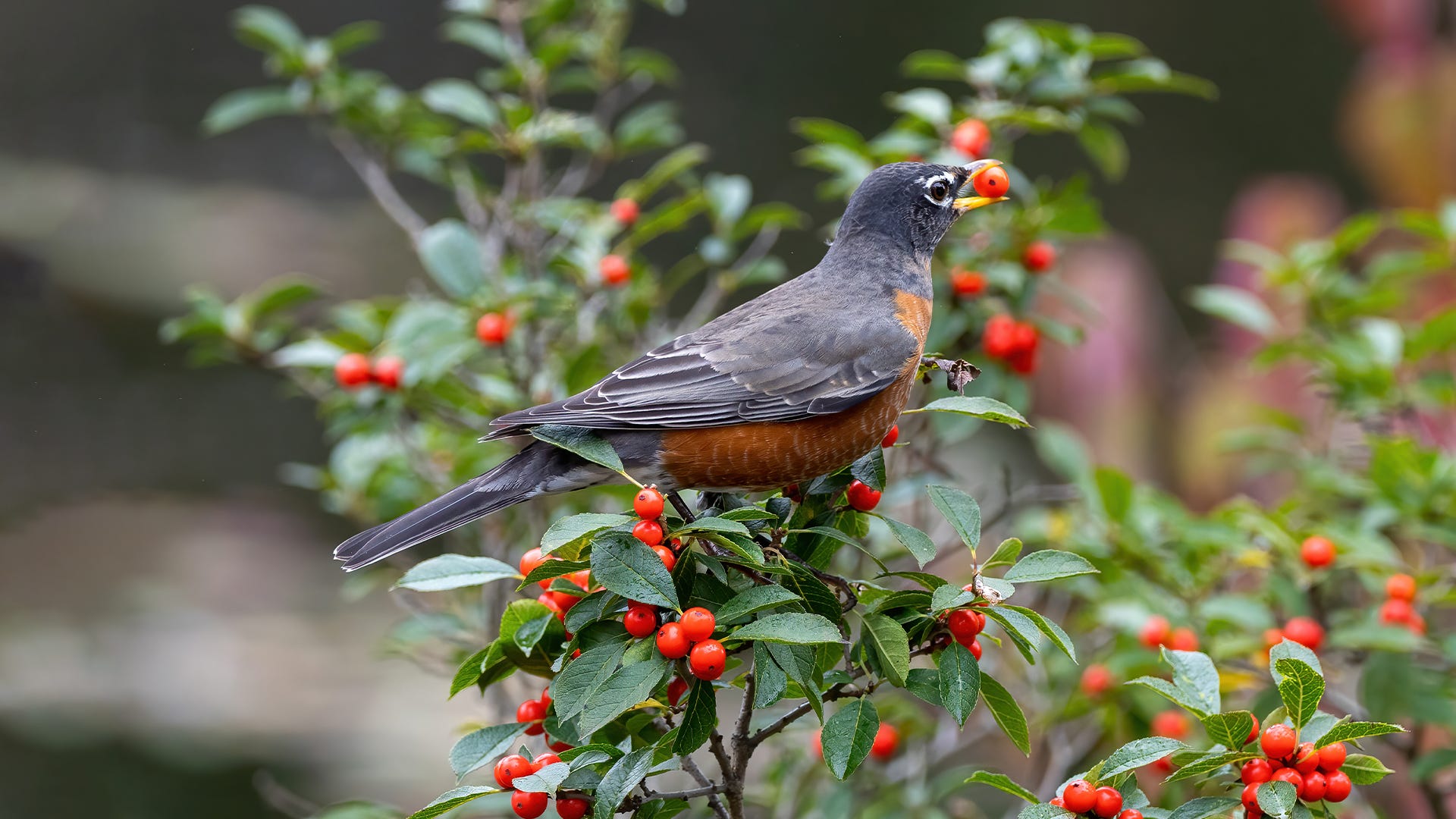
Hummingbirds are well into their migration north, so fans of nature's mini helicopters have started to put out their feeders. Unfortunately, it seems that as soon as we hang the sweet stuff, ants, wasps, and other bugs make a beeline for it. (I couldn't resist.)
One of the ways to keep ants out of your hummingbird feeder that you don't want to use is insecticides. Even the tiniest amount of the chemicals found in these murderous sprays will kill a hummingbird.
You also don't want to use oils, greases, or petroleum jelly on any pole or equipment you use to hang your hummingbird feeders. These may be effective in stopping the trail of ants, but if it gets onto the hummingbirds wings it will almost certainly prevent them from flying or preening.
These consequences are just as deadly as insecticides.
As alternatives, there are simple, natural ways to keep ants and other bugs out of your hummingbird feeder that you can safely and easily use.
#1 Don't use feeders with yellow accents
Yellow attracts wasps, and many hummingbird feeders feature yellow accents meant to make the port holes look like flowers. Keep it simple. A solid red feeder will attract hummingbirds without extending a special welcome to wasps.
By the way… you may read articles (some from reputable sources) about using fake wasp nests to deter wasps. The theory is wasps are extremely territorial and won't build a nest in an area where one already exists. Nice idea, but there's no scientific evidence to prove it works. Keep your money in your wallet.
#2 Use fishing line to hang your feeder
Seems simple enough, and it is. Fishing line is too thin for ants to use as a firefighter's pole to the feeder. They can't hang on.
You should also consider where to hang your hummingbird feeder. Attach the fishing line to a tree branch or a gutter and preferably in an area with shade or dappled sunlight.
Ants can easily scale a pole, but are not as likely to leave the ground to climb a tree. Same applies to a gutter on your porch or shed.
And flying insects don't like shade plus, being out of direct sunlight, the sugar water won't ferment as quickly. (Fermented sugar water will make your hummingbirds sick. It's why you need to clean your feeders frequently).

#3 Give essential oils a try
A study published in Pest Management Science, determined that several essential oils do a very good job of repelling yellow jackets and paper wasps. But as I cautioned in the beginning, don't use these or any other oils on your pole or hanging equipment. However, if you place a small saucer or dish with some of these oils nearby, it will likely help lessen the problem.
- clove
- pennyroyal
- lemongrass
- spearmint
- wintergreen
- sage
- rosemary
- lavender
- geranium
- patchouli
- citronella
- Roman chamomile
- thyme
- fennel seed
- anise
- peppermint
Scientists who conducted their experiments also found two mixtures that completely blocked the attraction of worker bees: a mixture of clove, geranium, and lemongrass; and a mixture of clove, geranium, lemongrass, and rosemary.
The study didn't comment on growing these plants and herbs close to your feeders, but you could give it a try. Plant them in a flowerpot and, if nothing else, it's sure going to smell nice.
See also: 6 Native Plants That Will Attract Hummingbirds to Your Regional Garden
#4 Try a bug-deterring feeder
You can buy hummingbird feeders that have features intended to stop ants and other insects.
Saucer feeders
Several reasons make saucer feeders a good choice.
If you don't overfill them, they don't leak, lessening a bug's access to the nectar and minimizing the sweet smell that attracts bees. They also keep the nectar out of a bug's reach, while hummingbirds with their long tongues can drink to their heart's content. And they're easy to clean.
Ant moats and bee guards
Some feeders come with built in ant moats and bee guards.
You need to make sure to keep the ant moat filled with water. Ant moats work because they drown the ants that gain access to your feeder. No water; no good.
Bee guards are tiny plastic caps placed over the port holes. They have a tiny hole, almost a pinprick, which keeps the bees out, but don't prevent hummingbirds from drinking.
If you have a feeder with neither an ant moat or bee guards, you can purchase them separately at wild bird stores or other locations that sell bird feeders.
5. Relocate your feeder
If you've fed hummingbirds before, you probably know that from year to year hummingbirds visit the same feeder. They easily remember the location of a good food source. They'll also look around for more food—like your hummingbird-friendly flower garden.
Insects, however, are a bit lazier. They like convenience. If you move your hummingbird feeder just a few feet from where it was, the bugs won't go looking for it.
If you have multiple feeders, rotate them around your garden whenever you refill or clean them. It'll keep the bugs at bay and your hummingbirds and other birds won't mind.
Remember… to keep bugs, ants, and wasps out of your hummingbird feeders, don't use insecticides or anything slippery (like oil) or sticky (like petroleum jelly). Instead, keep clear of yellow decorations on the feeder, use fishing line to hang it, set out some essential oils, use an ant moat and bee guards, and consider moving your feeders around your yard.
And if you want to know when the hummingbirds are headed your way, check out this migration map.







